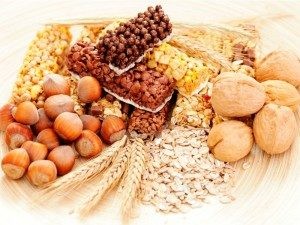Fiber 101

Bread and cereal labels beckon you with phrases such as “whole grain guarateed,” “high-fiber” and even “extra fiber.” We know that a certain amount of fiber in our daily diet helps promote good health, but why?
Years ago, our mothers called it “roughage,” but even then, they knew fiber was good for “keeping us regular.” Matriarch wisdom aside, research has since shown that fiber has benefits beyond digestive health. According to the Mayo Clinic, a diet that contains the recommended daily amount of fiber can promote good health in many ways:
- Good for the Heart – Soluble fibers lower “bad” cholesterol. A diet high in fiber also can help reduce blood pressure and inflammation.
- Diabetes Control and Prevention – A reduction in the risk for acquiring adult onset/Type 2 diabetes has been associated with fiber intake. Fiber slows the absorption of sugar in the body.
- Weight Loss Support – Consuming high-fiber foods provide bulk and help us feel full longer.
- While some studies have shown a correlation between a high-fiber diet and a reduced incidence of colorectal cancer, further research is still needed.
There are two types of fibers, soluble fiber and insoluble fiber:
- Soluble fiber dissolves in water, forming a gel-like consistency during the digestive process. This slows digestion and regulates nutrient absorption including cholesterol. Further, when soluble fiber ferments in our bodies, it produces fatty acids that help to stabilize blood glucose levels. Soluble fiber is found in oat bran, peas, beans, apples, oranges and other citrus fruits.
- Insoluble fiber adds bulk to the stool and promotes quick movement of food through our digestive system. This type of fiber is particularly beneficial for people who struggle with bowel irregularity. Insoluble fiber is found in nuts and dark, leafy green vegetables such as spinach and broccoli.
For some patients, particularly those with ongoing constipation issues or irritable bowel syndrome, physician-recommended over-the-counter fiber supplements, like Metamucil or Miralax, can be beneficial. However, these supplements do not provide the vitamins and minerals found in fiber rich foods and vegetables.
The American Dietetic Association’s recommended daily amount of fiber for men is 38 grams, but drops to 30 grams for men over age 50. Women should consume 25 grams of fiber daily, 21 grams after age 50.
If you consume more than 50 grams of fiber in one day, its benefits become counterproductive, lowering your body’s ability to absorb other vitamins and minerals during digestion. Begin introducing fiber to your diet gradually over several weeks. Otherwise, it can result in gas and bloating.
Drinking adequate amounts of fluids is especially important when consuming fiber or fiber-rich foods. Fiber absorbs water from the small and large intestines, the water then increases bulk and keeps the food particles and digestive juices soft and moving through the system. Without sufficient fluid intake, the fiber will not be effective in this process. Liquids can be tea, coffee, fruit juices, or other beverages…but the recommended liquid of choice is pure water!

